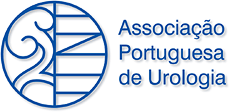Renal Failure Due to Sulfadiazine Induced Calculi: Case Report and Literature Review
DOI:
https://doi.org/10.24915/aup.36.1-2.93Keywords:
Kidney Calculi/chemically induced, Renal Insufficiency/ chemically induced, Sulfadiazine/adverse effectsAbstract
Introduction: Renal calculi is a prevalent disease and has some causes described. The drug calculi origin are rare, accounting for around 1% to 2% of cases. The crystals of sulfadiazine are formed in 20% to 45% of cases, but between 0.4% and 4.5% are associated with renal failure. We present a case report and a review of the literature on diagnosis and treatment of this entity, given its rarity and specificity.
Case Report: A 48-year-old male, diabetic, during treatment for acute toxoplasmosis with sulfadiazine initiated renal colic associated with renal failure. The hypothesis of drug calculation was considered, because during the diagnostic investigation of toxoplasmosis, imaging studies were performed and presented without renal calculi. Initially he was treated conservatively with hyperhydration and alpha-blocker, but since he did not present improvement in the exams, he underwent ureterolithotripsy and double j stent.
Conclusion: We present a report of urinary lithiasis of pharmacological origin associated with renal insufficiency and a review of the literature.
Downloads
References
2. Teichman JM. Clinical practice. Acute renal colic from ureteral calculus. N Engl J Med. 2004;350:684-93.
3. Daudon M, Jungers P. Drug-induced renal calculi: epidemiology, prevention and management. Drugs. 2004;64:245-75.
4. Matlaga BR, Ojas DS, Dean GA. Drug-induced urinary calculi. Rev Urol.2003;5: 227.
5. Allinson J, Topping W, Edwards, Miller RF. Sulphadiazine- induced obstructive renal failure complicating treatment of HIV- associated toxoplasmosis. Int J STD AIDS. 2012;23:210–2. doi: 10.1258/ijsa.2009.009539.
6. Kabha M, Dekalo S, Barnes S, Mintz I, Matzkin H, Sofer M. Sulfadiazine-Induced Obstructive Nephropathy Presenting with Upper Urinary Tract Extravasation. J Endourol Case Rep. 2016;2:159-161.
7. Weinert, Letícia Schwerz. Nefrite intersticial aguda após exposição a Losartan.
Rev HCPA. 2007;7:61-4.




